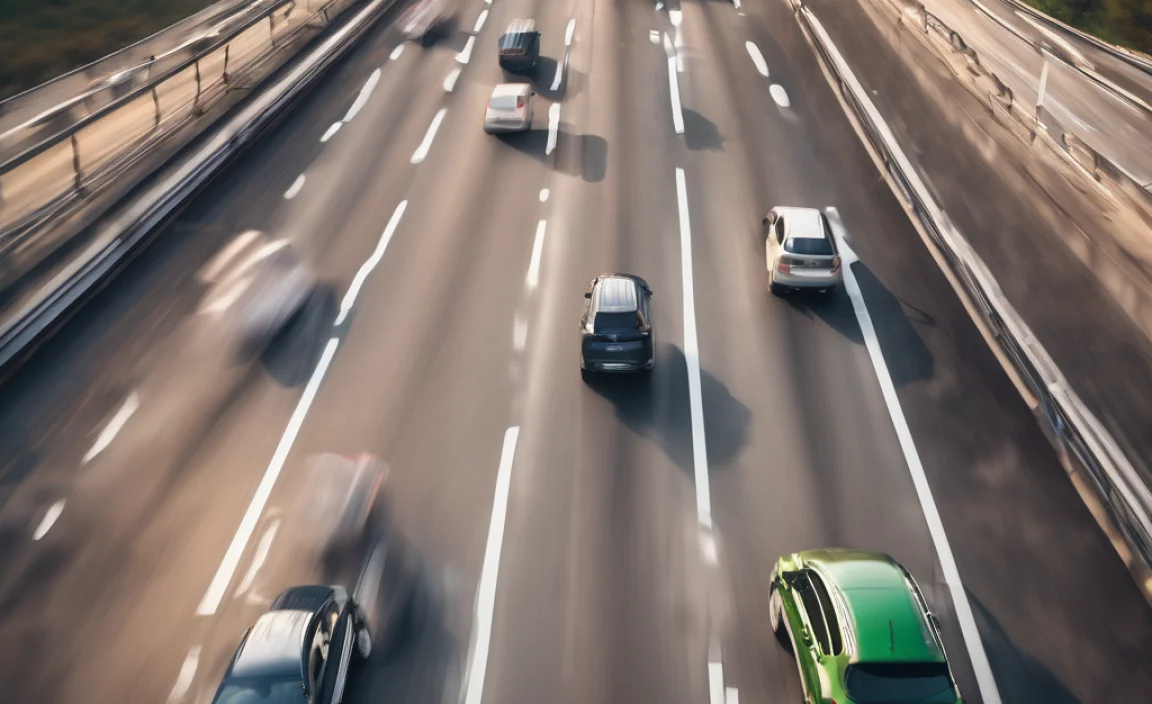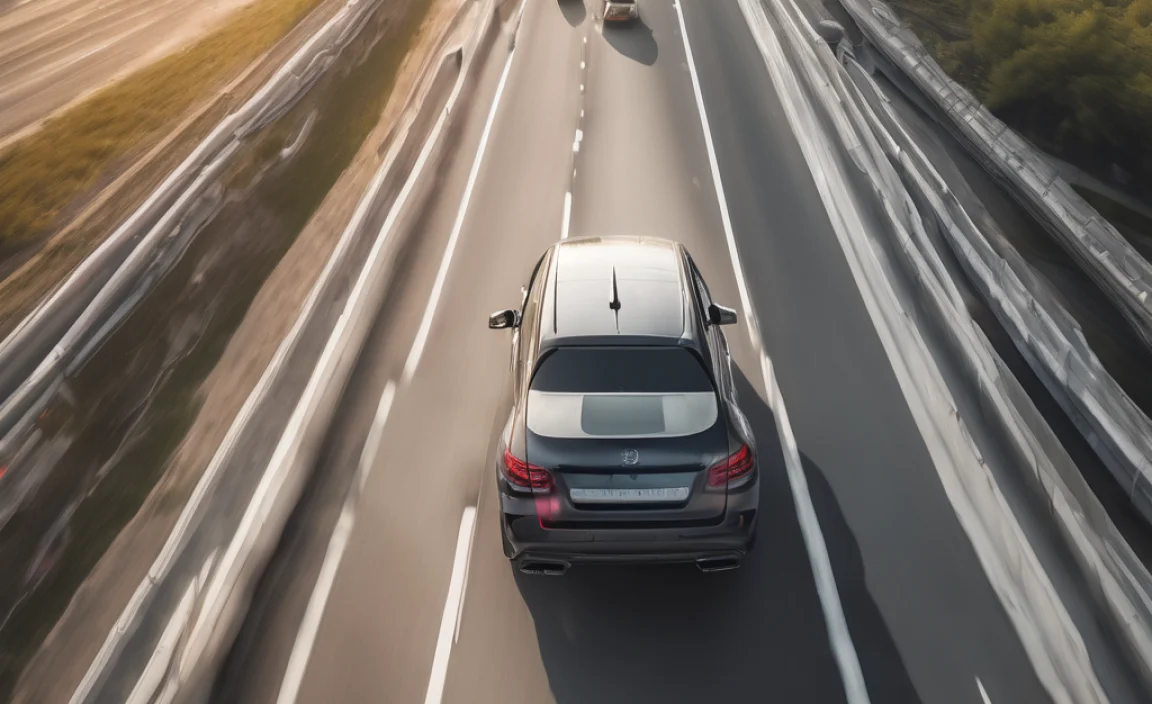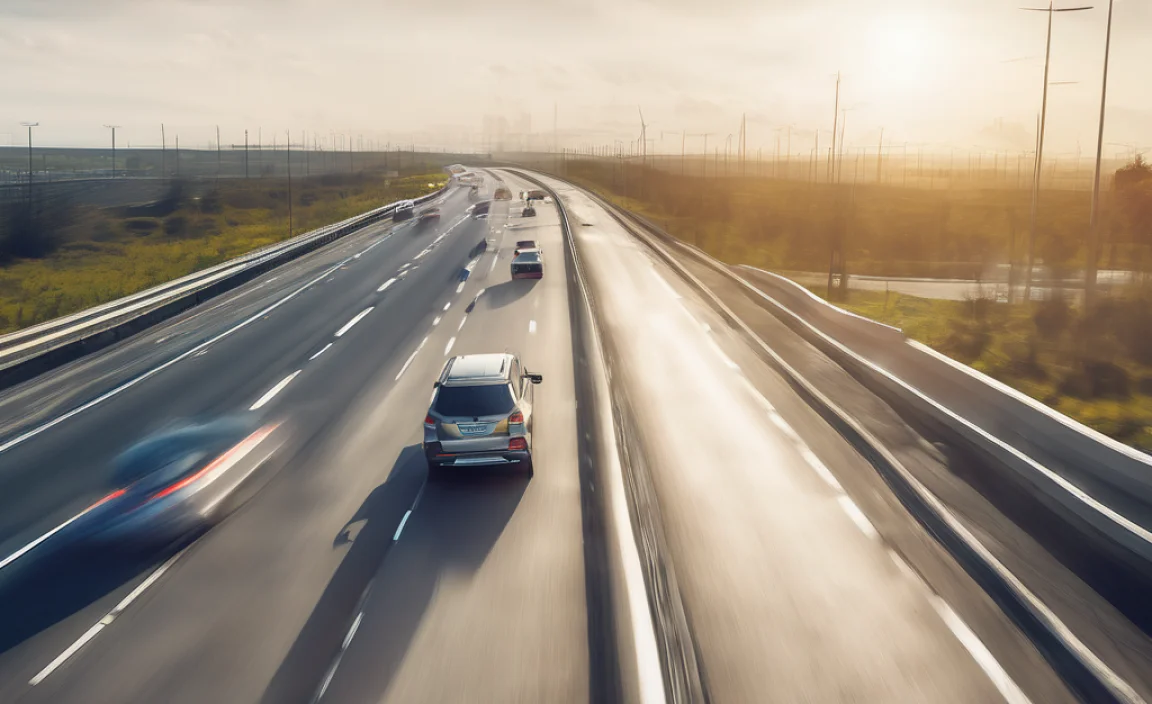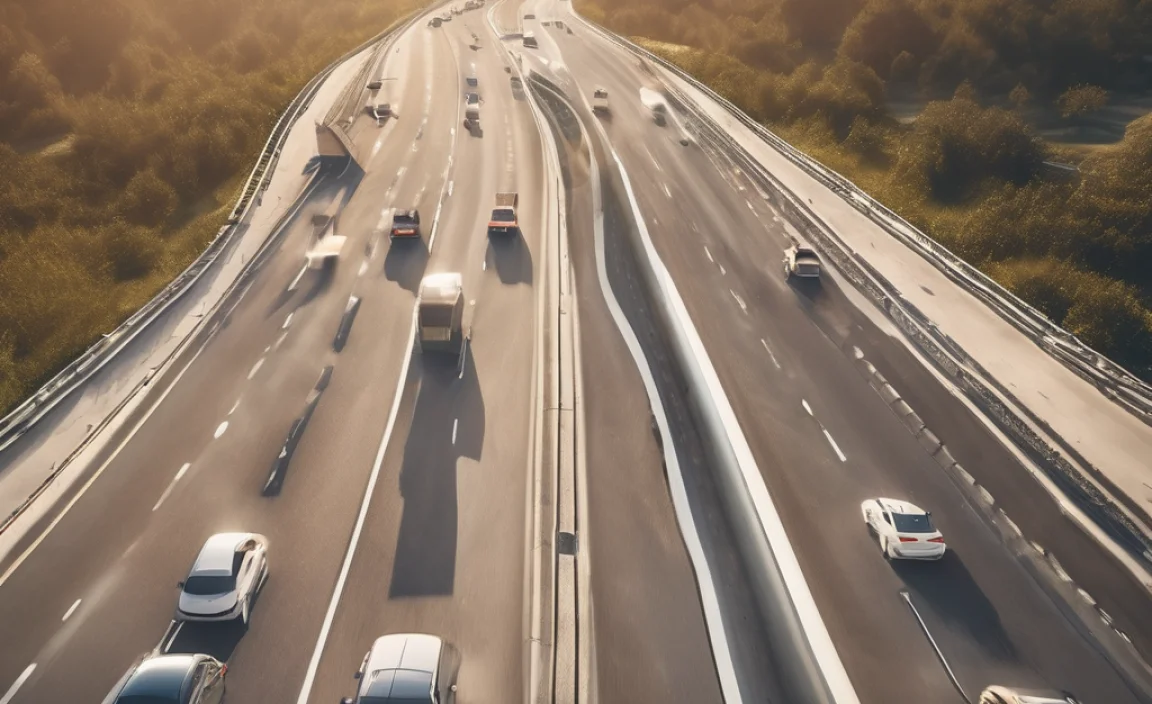GLA-Class Highway Mileage: Essential Fuel Saver
Your Mercedes-Benz GLA-Class can achieve excellent highway mileage with simple, practical adjustments. This guide reveals how to maximize your fuel efficiency on the open road, saving you money and reducing your environmental impact. Follow these easy tips to turn every drive into a cost-saving journey.
Owning a Mercedes-Benz GLA-Class is a joy, offering a blend of luxury, performance, and practicality. But when it comes to your wallet, fuel costs can add up, especially on longer journeys. Many GLA-Class owners wonder if they’re getting the most out of their fuel when cruising on the highway. It’s a common concern, as even small improvements in fuel economy can lead to significant savings over time. The good news is that optimizing your GLA-Class’s highway mileage isn’t complicated. With a few smart driving habits and a little attention to your vehicle’s maintenance, you can significantly boost your miles per gallon (MPG). This guide will walk you through everything you need to know, making it easy for you to keep more money in your pocket and enjoy smoother, more economical drives.
Understanding Your GLA-Class’s Fuel Efficiency

The Mercedes-Benz GLA-Class, known for its compact SUV design and premium features, can be surprisingly fuel-efficient when driven correctly on the highway. While specific MPG ratings vary slightly by model year, powertrain, and even driving conditions, the underlying principles of fuel saving remain the same. Highway driving is generally more efficient than city driving because you encounter fewer stops and starts, and your engine can operate at a more consistent speed. However, even on the highway, certain factors can still impact how much fuel you burn. Understanding these factors is the first step to improving your GLA-Class highway mileage.
Key Factors Affecting GLA-Class Highway Mileage

Several elements can influence your GLA-Class’s fuel consumption on the highway. Recognizing these can help you make conscious changes to improve your MPG.
- Driving Speed: This is one of the biggest factors. Driving too fast means your engine works harder, consuming more fuel.
- Tire Pressure: Underinflated tires create more rolling resistance, forcing your engine to work harder.
- Vehicle Maintenance: Regular servicing, clean air filters, and proper fluid levels all contribute to optimal engine performance and fuel efficiency.
- Aerodynamics: External additions like roof racks or open windows at high speeds can disrupt airflow and increase drag.
- Weight: Carrying unnecessary extra weight in your vehicle requires more energy (fuel) to move.
- Driving Style: Harsh acceleration and braking, even on the highway (like during lane changes), can waste fuel.
Maximizing Your GLA-Class Highway Mileage: A Step-by-Step Guide

Let’s break down how you can actively improve your GLA-Class’s highway mileage. These are practical steps you can implement starting with your very next drive.
1. Optimize Your Driving Speed
This is the single most impactful change you can make. For most vehicles, including the GLA-Class, there’s an optimal speed range for fuel efficiency, typically between 50-60 mph. Exceeding this not only increases your chances of speeding tickets but also significantly reduces MPG. According to the U.S. Department of Energy, fuel economy typically decreases rapidly at speeds above 50 mph.
Actionable Tip: Use your cruise control on the highway. Set it to a speed within the efficient range and let the car maintain it. This prevents subconscious acceleration and helps you stay at a steady pace.
2. Maintain Proper Tire Pressure
Underinflated tires are a silent fuel killer. They increase the “rolling resistance,” meaning your engine has to burn more fuel to keep the car moving. Properly inflated tires are crucial for safety and fuel economy.
Actionable Tip: Check your tire pressure at least once a month, and before long trips. You can usually find the recommended tire pressure on a sticker inside the driver’s side doorjamb or in your owner’s manual. Use a reliable tire pressure gauge and inflate them to the recommended PSI (pounds per square inch).
| Tire Size | Recommended PSI (Example) | Impact on MPG |
|---|---|---|
| Front (e.g., 235/55R18) | 35 PSI | Correct pressure optimizes contact patch for efficiency. |
| Rear (e.g., 235/55R18) | 38 PSI | Underinflation by 10% can reduce MPG by up to 1%. |
Note: Always refer to your GLA-Class owner’s manual or the sticker on the driver’s side doorjamb for the exact recommended tire pressure for your specific vehicle. The values above are illustrative.
3. Keep Up with Regular Maintenance
A well-maintained GLA-Class runs more efficiently. Essential maintenance tasks ensure your engine components are working optimally, directly impacting fuel consumption.
- Air Filter: A clogged air filter restricts airflow to the engine, making it work harder and use more fuel. Check and replace it according to your service schedule or if it appears dirty.
- Spark Plugs: Worn spark plugs can lead to incomplete combustion, wasting fuel. Ensure they are replaced at recommended intervals.
- Oil Changes: Using the correct grade of synthetic oil, as recommended by Mercedes-Benz, reduces friction within the engine, improving efficiency.
- Check Engine Light: If your check engine light comes on, don’t ignore it. It often indicates an issue that can negatively affect fuel economy.
For detailed maintenance schedules, always consult your official Mercedes-Benz owner’s manual.
4. Improve Vehicle Aerodynamics
Your GLA-Class is designed with aerodynamics in mind. Anything that disrupts the smooth flow of air around your vehicle increases drag, forcing your engine to use more fuel, especially at highway speeds.
- Remove Roof Racks: If you’re not actively using a roof rack, remove it. Even empty racks create significant drag.
- Close Windows: At highway speeds, open windows create much more aerodynamic drag than running your air conditioning.
- Keep Exterior Clean: While less impactful, a clean exterior might offer minor aerodynamic benefits over a heavily soiled one.
For performance enthusiasts, understanding vehicle aerodynamics can be a deep dive. Resources like those from the NASA, while complex, illustrate the fundamental principles of drag reduction.
5. Reduce Unnecessary Weight
The heavier your vehicle, the more energy it takes to accelerate and maintain speed. This directly translates to higher fuel consumption.
Actionable Tip: Regularly clear out items from your trunk and cabin that you don’t need for your trip. While a few grocery bags won’t make a huge difference, large, heavy items left in the car consistently will. Aim to carry only what’s necessary.
6. Drive Smoothly
Aggressive acceleration and braking waste fuel. On the highway, this often happens during lane changes or approaching slower traffic.
Actionable Tip: Anticipate traffic conditions. Look ahead and ease off the accelerator gradually when approaching slower vehicles or traffic jams. Avoid sudden braking whenever possible. Smooth, consistent throttle input is key.
7. Utilize Eco Mode (If Equipped)
Many modern Mercedes-Benz vehicles, including some GLA-Class models, come with selectable driving modes, often including an ‘Eco’ mode. This mode typically adjusts throttle response, transmission shift points, and sometimes even climate control to prioritize fuel efficiency.
Actionable Tip: If your GLA-Class has an Eco mode, engage it for your highway driving. You might notice a slightly less aggressive acceleration, but the trade-off is usually a noticeable improvement in fuel economy.
Understanding GLA-Class Highway Mileage Ratings

When you’re looking at advertised MPG figures for your GLA-Class, you’ll usually see a city rating and a highway rating. These are determined by standardized testing. For example, a GLA 250 4MATIC might have EPA estimated ratings hovering around:
| Model (Example) | City MPG | Highway MPG | Combined MPG |
|---|---|---|---|
| GLA 250 4MATIC (Typical) | 24 MPG | 34 MPG | 28 MPG |
Disclaimer: These are example ratings and can vary based on the specific model year, engine, drivetrain, and other factory options. Always check your specific vehicle’s EPA mileage estimate for accurate figures.
Remember that real-world mileage can differ from these estimates due to driving habits, road conditions, weather, and vehicle load. The tips above are designed to help you get closer to, or even better than, the official highway MPG ratings.
Comparing GLA-Class Trim Levels and Fuel Efficiency

While the core principles of fuel saving apply across all GLA-Class models, there can be slight variations in highway mileage between different trims and engine options. For instance, the GLA 250 typically offers a good balance of performance and efficiency. If you’re considering different models or are curious about your current one:
- Engine Size: While not always the case, smaller engines often consume less fuel, though they might sacrifice some power.
- Drivetrain: Front-wheel drive (if available) is generally more fuel-efficient than all-wheel drive (4MATIC) due to less mechanical drag.
- Tires: The type and size of tires fitted from the factory can influence rolling resistance and thus fuel economy.
You can always compare official EPA ratings for different trims on sites like the EPA’s FuelEconomy.gov.
Advanced Tips for Serious Fuel Savers
If you’re looking to go the extra mile (pun intended) in optimizing your GLA-Class highway mileage, consider these:
- Fuel Choice: Your GLA-Class is designed to run on premium unleaded gasoline. While using a lower octane won’t necessarily save you money if your car’s performance is negatively impacted, sticking to the recommended fuel ensures optimal engine performance and efficiency.
- Minimize Idling: If you anticipate being stopped for more than a minute, it’s generally more fuel-efficient to turn off your engine and restart it. Modern starter motors are designed for frequent use.
- Planned Routes: For longer journeys, planning your route to minimize stops, avoid steep inclines, and take advantage of highway speeds can significantly improve overall fuel consumption.
Conclusion
Achieving excellent GLA-Class highway mileage is well within your reach. By focusing on smart driving habits like maintaining a steady, moderate speed, ensuring your tires are properly inflated, and adhering to your vehicle’s maintenance schedule, you can make a significant impact on your fuel consumption. Small changes, like removing unnecessary weight and optimizing aerodynamics, further contribute to this goal. Remember that your GLA-Class is engineered for efficiency, and by applying these practical, beginner-friendly tips, you’ll not only save money on fuel but also enhance your driving experience and reduce your environmental footprint. Happy, efficient driving!
Frequently Asked Questions (FAQ)
Q1: What is the typical highway MPG for a Mercedes-Benz GLA-Class?
A1: Typical highway MPG for a GLA-Class, like the GLA 250 4MATIC, often falls in the range of 30-35 MPG. However, this can vary based on the specific model year, engine, and driving conditions. Always check official EPA estimates for your exact vehicle.
Q2: How much does speed affect my GLA-Class’s highway mileage?
A2: Speed has a significant effect. Driving above 50-60 mph can noticeably decrease your fuel economy. For every 5 mph you drive over 50 mph, expect your fuel costs to increase significantly, as your engine has to work harder to overcome air resistance.
Q3: Is it worth it to always check my tire pressure for better mileage?
A3: Absolutely. Properly inflated tires reduce rolling resistance, allowing your engine to use less fuel. Consistently checking and maintaining the correct tire pressure is one of the easiest and most effective ways to improve your GLA-Class’s highway mileage.
Q4: My GLA-Class has an ‘Eco’ mode. Should I use it on the highway?
A4: Yes, using the ‘Eco’ mode on your GLA-Class is highly recommended for highway driving if you prioritize fuel efficiency. It adjusts engine and transmission settings to maximize MPG, often at the slight expense of immediate throttle response.
Q5: Does carrying extra weight in my GLA-Class affect highway MPG?
A5: Yes, any extra weight increases the energy (fuel) your engine needs to expend to move the vehicle. While a few items might not make a big difference, consistently carrying heavy, unnecessary items in your trunk can negatively impact your highway mileage.
Q6: Are there specific fuel additives that can improve my GLA-Class’s fuel economy?
A6: While some additives claim to improve fuel economy, their effectiveness can vary widely, and some could potentially cause harm if not used correctly or if they are not compatible with your vehicle. It’s generally best to stick to the manufacturer’s recommendations for fuel and maintenance, rather than relying on aftermarket additives for MPG gains.